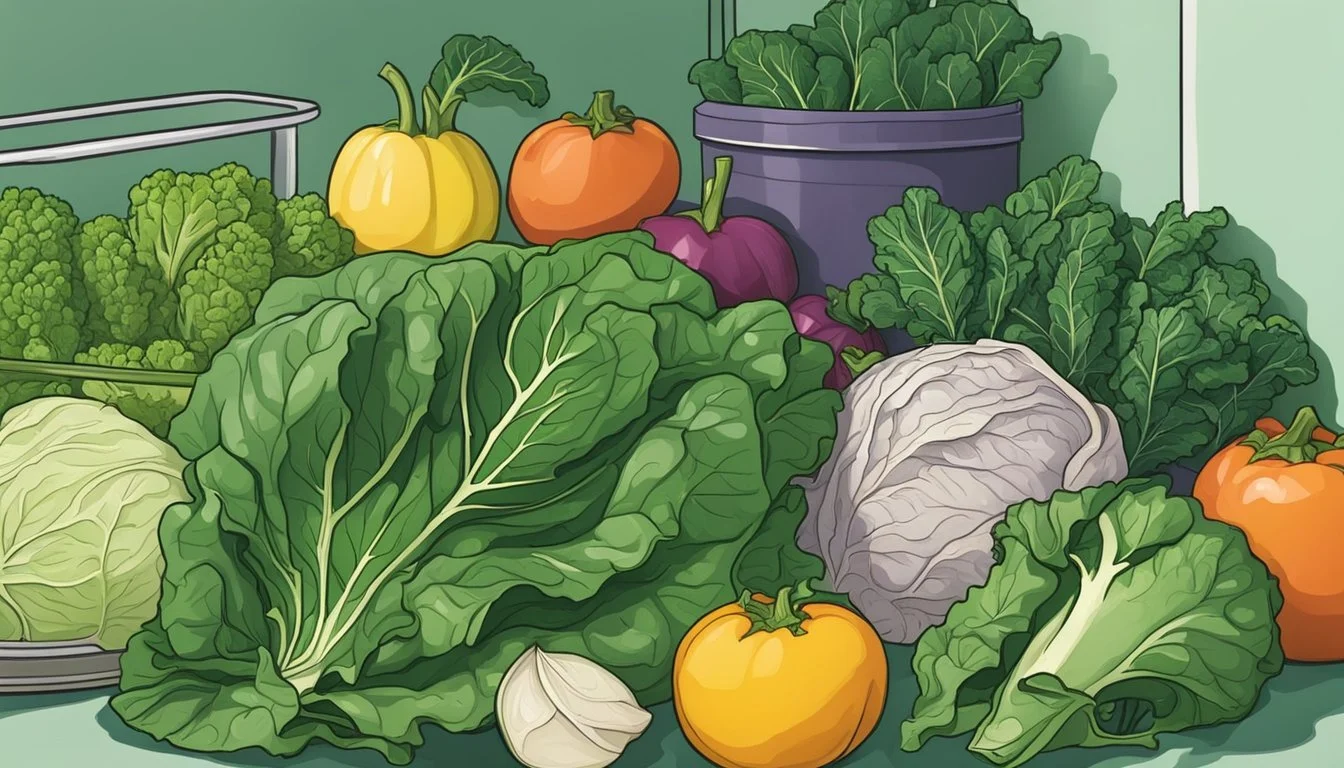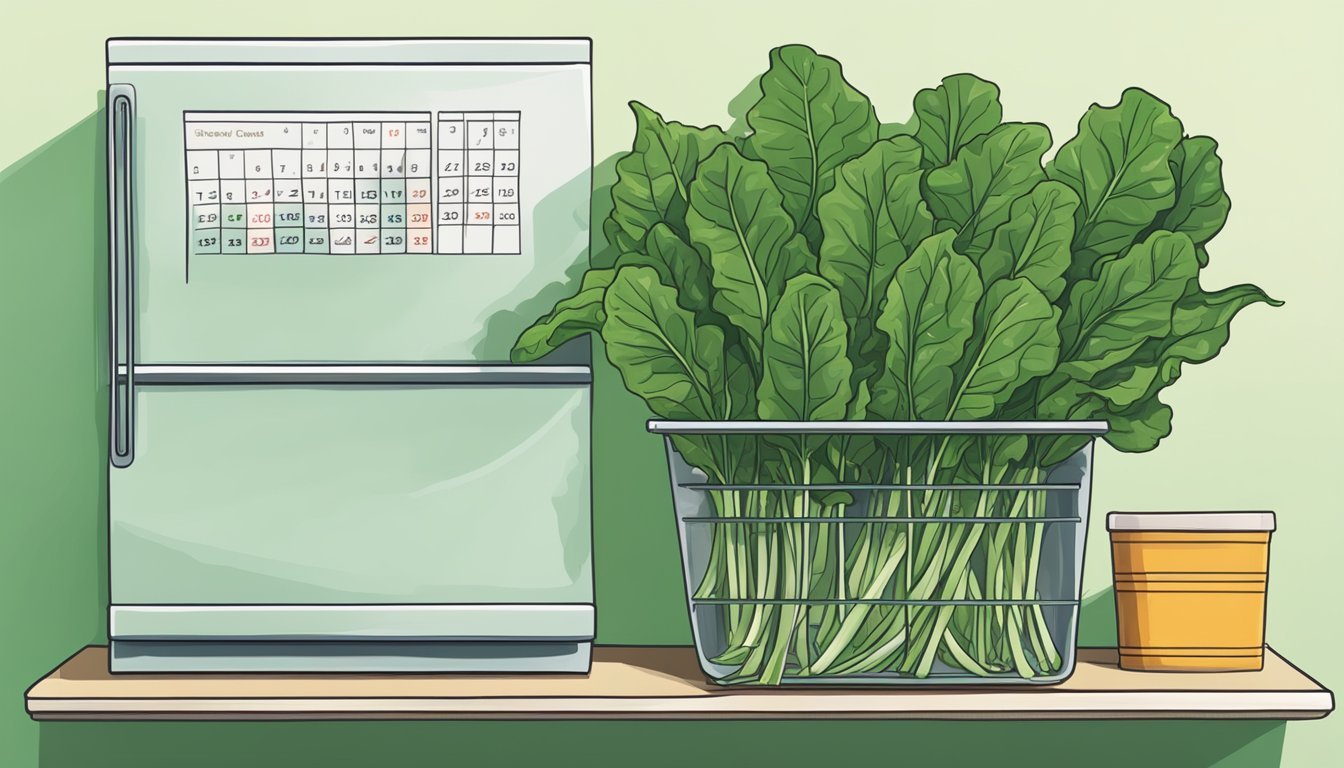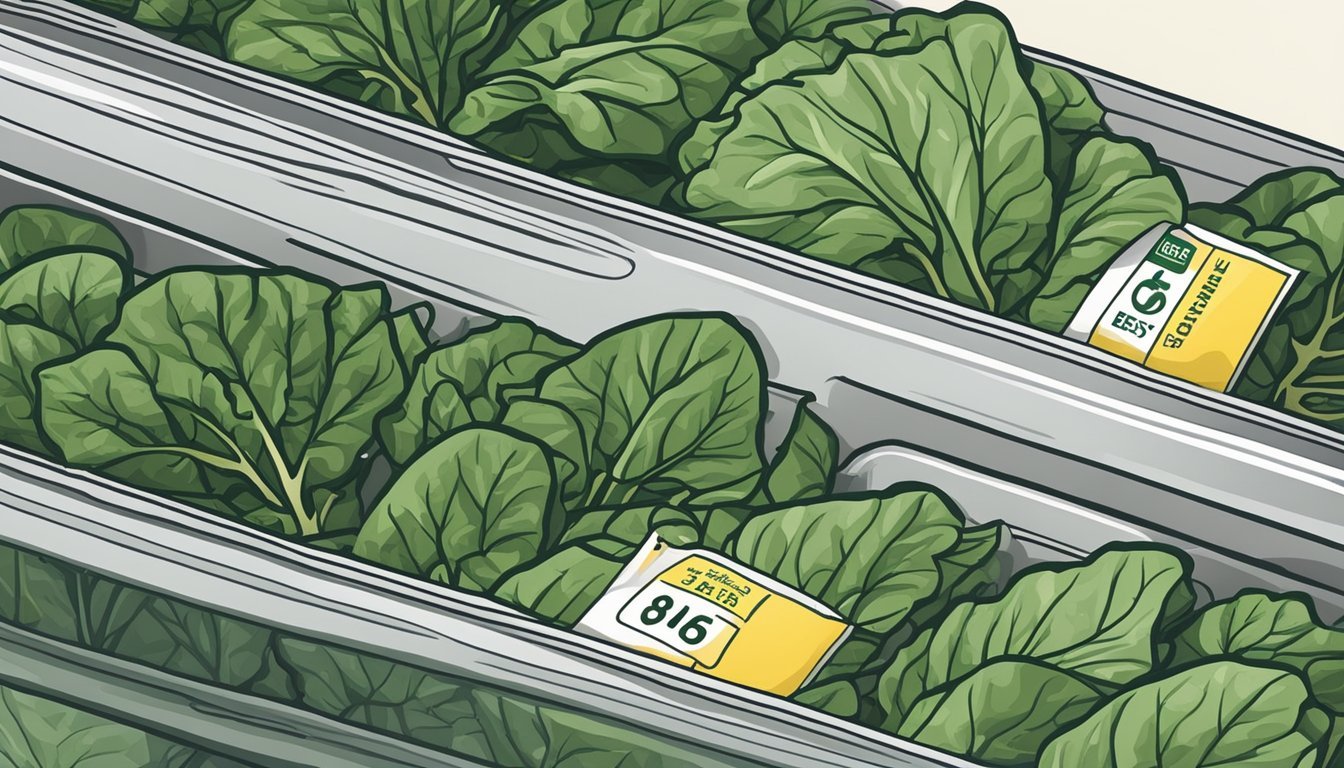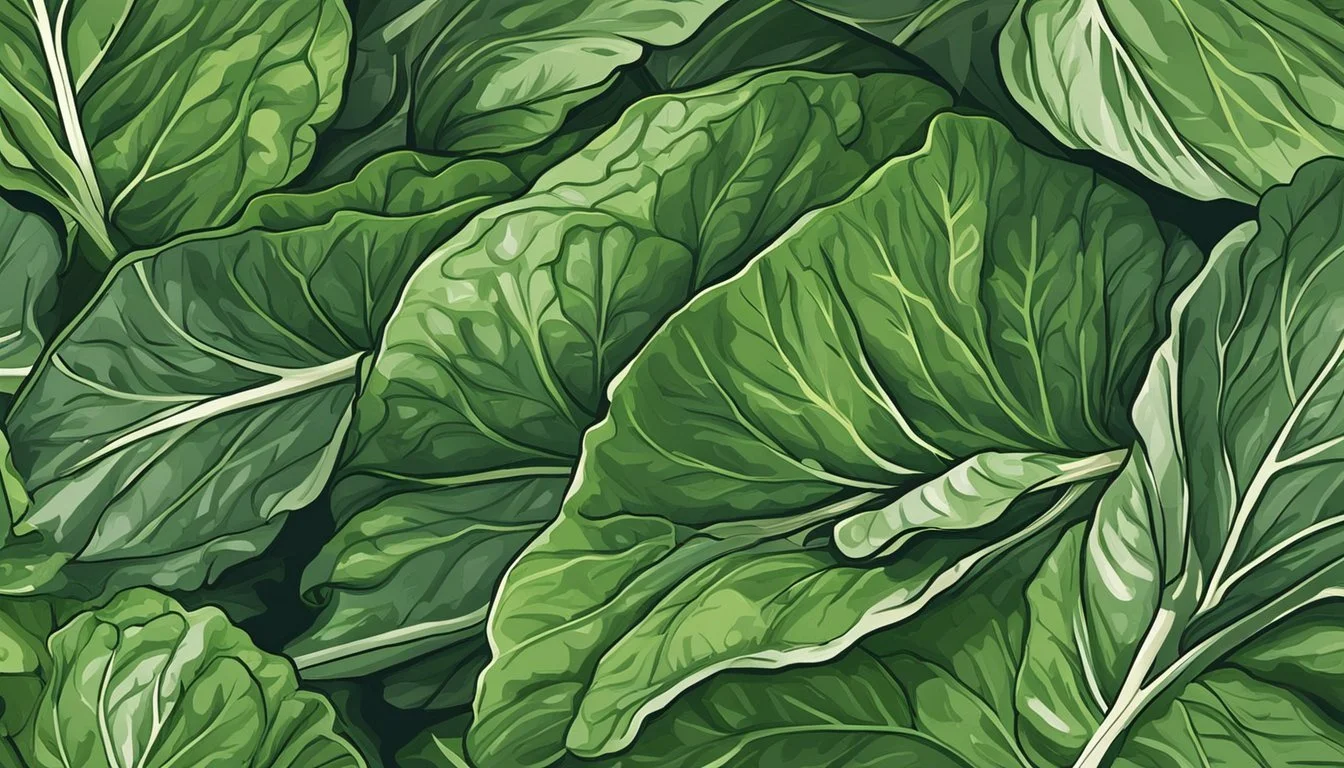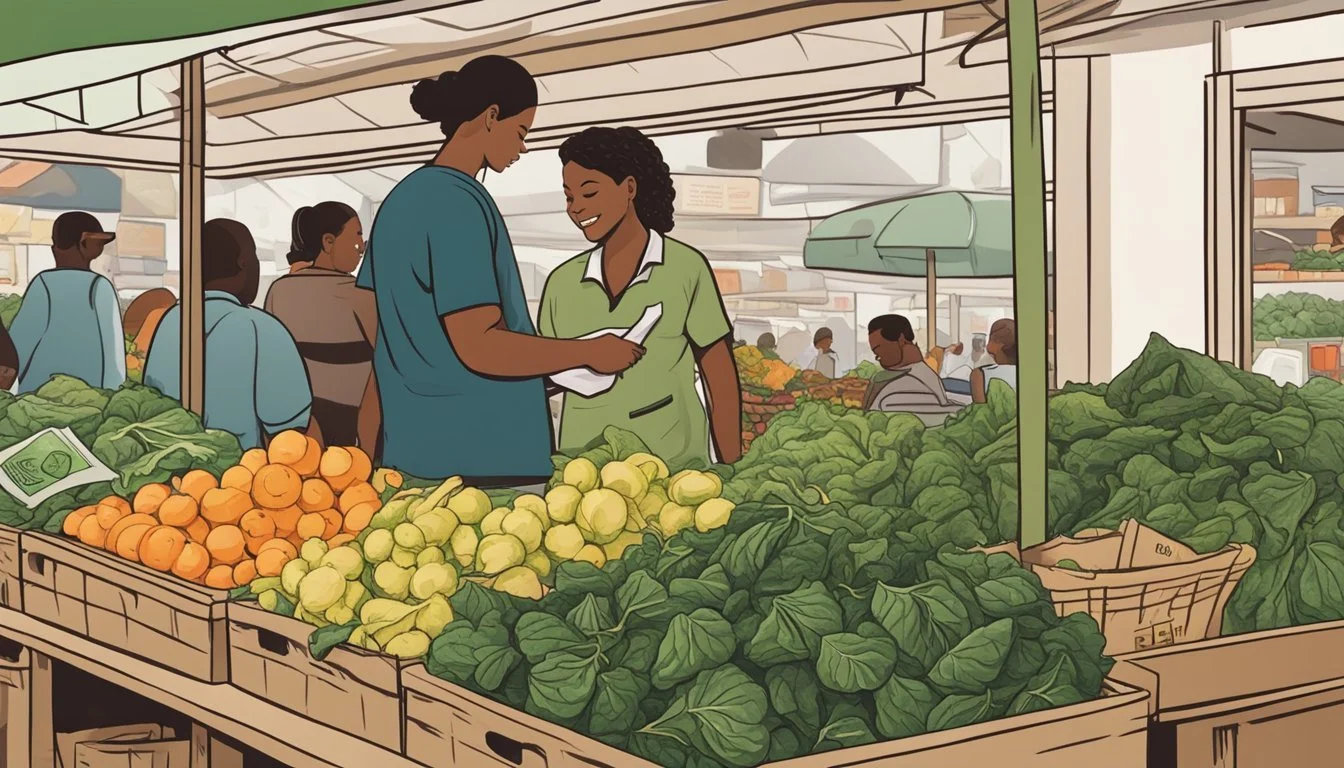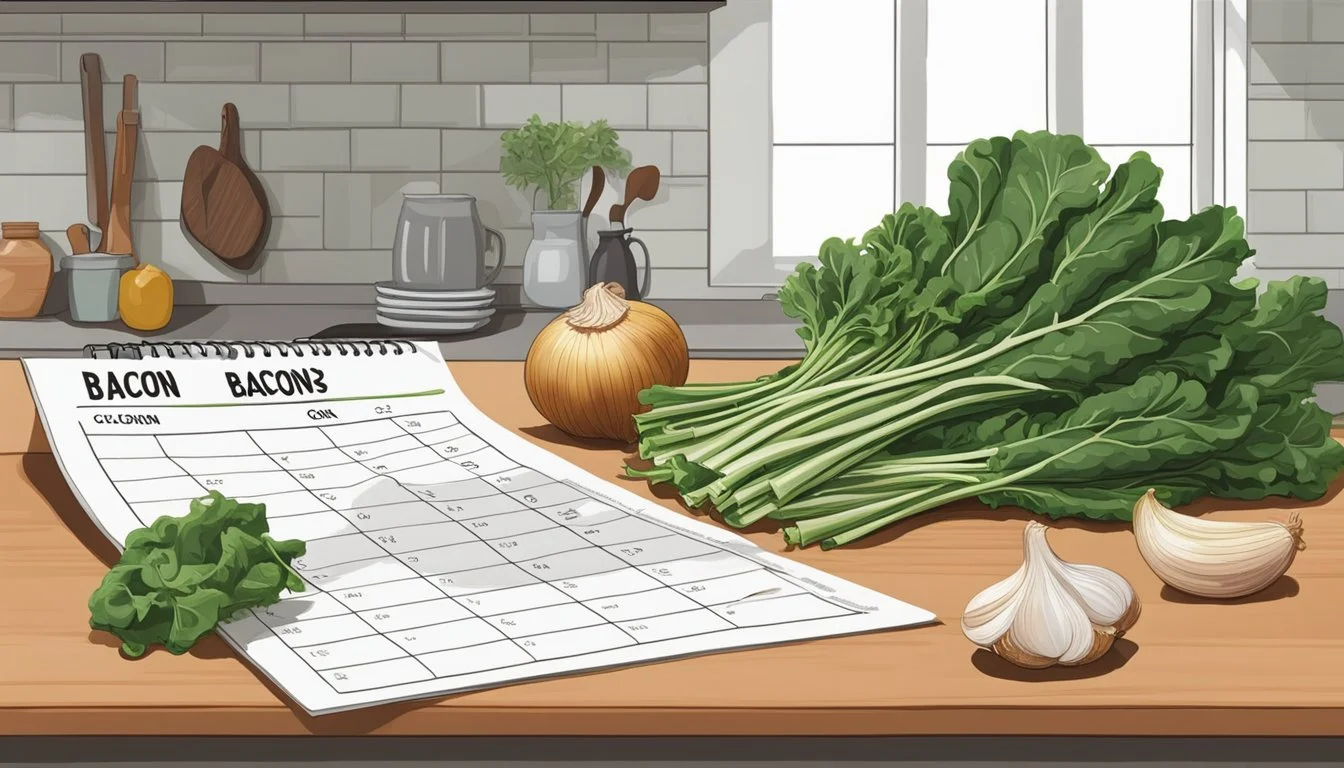How Long Do Collard Greens Last?
Shelf Life and Storage Tips
Collard greens (how long do collard greens last?), a nutritious leafy vegetable, are staples in numerous kitchens thanks to their versatility and rich nutrient content. Understanding the storage longevity of collard greens is essential for those who wish to enjoy their flavor and health benefits to the fullest. They can last in various states of storage, each method offering a different shelf life that ensures collard greens remain a vibrant and delicious complement to meals.
In the refrigerator, collard greens typically stay fresh for about 5 to 10 days. Their shelf life can be optimized by storing them in the crisper drawer, wrapped in a damp paper towel and placed inside a plastic bag to retain moisture and prevent wilting. Freezing collard greens extends their usability substantially, allowing them to be kept for 8 to 10 months when properly prepared and stored in an airtight container or freezer bag. Prior to freezing, blanching the greens in boiling water followed by an ice bath can help preserve their color, texture, and flavor.
The longevity and quality preservation of collard greens also depend on ensuring they are thoroughly dried and kept away from excess moisture during storage. Writing the storage date on the packaging when freezing these greens assists in monitoring their lifespan and guarantees the best use within the recommended timeframe. Whether consumed fresh or after an extended period of storage, proper techniques can help maintain the inherent qualities of collard greens.
Understanding Collard Greens
Collard greens are a nutritious vegetable, rich in vitamins and minerals, known for their ability to remain fresh for extended periods when properly cared for.
Collard Greens Profile
Collard greens, part of the Brassica family, which includes kale and cabbage, are a leafy green vegetable with large, dark-colored edible leaves. They are a staple in Southern United States cuisine but are consumed worldwide. The fresh collard greens have a slightly bitter taste, which becomes more mellow and even slightly sweet after the first frost.
Common Characteristics:
Family: Brassica (same as kale and cabbage)
Taste: Slightly bitter, mellower after frost
Texture: Firm, slightly chewy leaves
Color: Dark green
When stored correctly, fresh collard greens can last up to one week in the refrigerator. Ensuring the leaves are dry and wrapped in a damp paper towel before being sealed in a plastic bag can maximize their shelf life.
Nutritional Value
Collard greens are an excellent source of various nutrients. They are particularly rich in vitamin K, which is crucial for blood clotting, and calcium, essential for bone health. Additionally, they provide a good amount of fiber, promoting digestive health.
Nutrient Content:
Nutrients Content Vitamin K High Vitamin A Moderate Vitamin C High Calcium Moderate Iron Moderate Fiber High
They also contain antioxidants, which support the body in protecting cells from damage. The vitamin C content not only boosts the immune system but also enhances iron absorption. Their low calorie and high fiber content make collard greens an ideal choice for those seeking nutrient-dense foods.
Selecting and Storing Collard Greens
Carefully selecting and storing collard greens can significantly extend their shelf life, ensuring that the leaves stay crisp and nutritious. From choosing the freshest bunches to the right storage methods, these steps can help maintain the greens' freshness and antioxidants.
Selecting Quality Greens
When selecting collard greens, look for vibrant, deep-green leaves. The stems should be firm but not woody. Avoid leaves that show signs of wilting or yellowing, as these are indicators that the greens are past their prime. Freshness is paramount for both flavor and nutritional value.
Storing Raw Collard Greens in the Refrigerator
To store collard greens in the refrigerator, one should keep them in the crisper drawer which is designed to maintain an optimal environment for freshness. The leaves should be unwashed to prevent excess moisture, which can accelerate spoilage.
Tips for Refrigerator Storage
Dry: Ensure the collard greens are dry before storing; excess water can promote decay.
Plastic Bag: Place the dry leaves in a plastic bag with a few air holes for circulation.
Paper Towel: A damp paper towel included in the bag can help maintain humidity without excess moisture.
Freezing Collard Greens for Long-Term Storage
Freezing collard greens can extend their shelf life for several months. To prepare for freezing:
Wash the greens thoroughly in cold water.
Dry them as much as possible.
Place them in airtight containers or freezer bags.
Blanching Before Freezing
Blanching collard greens before freezing helps to preserve their color, texture, and nutritional content. Here’s how to do it:
Boil the greens for about 3 minutes.
Immediately plunge them into ice-cold water to stop the cooking process.
Dry the greens completely, then pack them in airtight containers or freezer bags, ensuring as little air as possible is trapped inside to avoid freezer burn.
Maximizing Freshness and Flavor
To ensure that collard greens retain their peak freshness and robust flavor, it's vital to handle them properly from the moment they are purchased. Adherence to recommended cleaning, drying, and storage techniques can significantly extend the shelf life and quality of collard greens.
Washing and Cleaning
Collard greens must be washed thoroughly to remove any dirt, debris, or residual chemicals. Leaves should be submerged in a bowl of cold water, gently swirled to loosen and remove unwanted particles, and then lifted from the water.
Step 1: Fill a large bowl with cold water.
Step 2: Submerge collard greens in water.
Step 3: Swirl leaves gently to dislodge dirt and debris.
Step 4: Lift greens from water, allowing dirt to settle.
It is crucial to avoid the use of soap or other harsh cleaning agents as these can be absorbed by the greens and affect their flavor and safety for consumption.
Drying After Wash
After washing, collard greens require careful drying, as excess moisture can speed up decay and lead to spoilage. A salad spinner is effective for removing most of the water.
Use a salad spinner: Spin the greens to remove excess water.
Alternative method: If a spinner is not available, gently pat the leaves dry with clean paper towels.
Proper drying helps in maintaining texture and extends the freshness of the greens.
Handling and Preparing
Before refrigerating, collard greens should be prepped for storage. This includes removing any damaged or yellowing leaves, as these can harbor bacteria which may compromise the quality of the remaining greens.
Remove damaged leaves: Discard any leaves that show signs of spoilage.
Prepare for storage: Store the dry greens in a perforated bag within the crisper section of the refrigerator.
The ideal temperature for storage is between 32°F and 36°F (0°C to 2°C). These conditions inhibit bacterial growth and delay wilting, allowing the collard greens to maintain their crispness, ultimately preserving their flavor.
Identifying and Preventing Spoilage
Recognizing when collard greens have spoiled and understanding how to prevent it are crucial for safe consumption and maintaining their nutritional value.
Signs of Spoilage
Collard greens show several clear indicators when they begin to spoil. One should look for leaves that appear wilted or have a slimy texture, which signifies breakdown. Color also plays a role; discoloration, such as yellow spots or leaves that have turned from vibrant green to a dull, lifeless hue, is a sign of aging. Other indicators include an off-odor; fresh collard greens should not emit a strong, unpleasant smell. When greens become soft or exhibit any of these properties, they should be considered spoiled and not safe to eat.
Preventing Spoilage in Storage
To minimize spoilage and extend the shelf life of collard greens in the fridge, certain storage practices should be followed:
Do Not Wash Before Storing: Moisture can accelerate decay, so collard greens should be kept dry until they are ready to be used.
Use a Perforated Bag and Paper Towel: Store them in a perforated plastic bag within the crisper drawer with a paper towel to absorb extra moisture.
Seal Effectively: Whether in a sealed bag or container, ensuring collard greens are airtight is important to hinder the growth of mold or bacteria.
By following these methods, one can help ensure that collard greens remain fresh and safe to consume for as long as possible within their shelf life.
Cooking with Collard Greens
When preparing collard greens, one can enjoy them in a variety of cooked forms, ranging from tender Southern-style dishes to crisp stir-fries. The robust leaves of collard greens make them versatile in the kitchen, with the ability to blend into multiple cuisines and meal types.
Cooking Methods
Blanching: A quick method to prepare collard greens is to blanch them. One must submerge the raw leaves in boiling water for a few minutes and then immediately immerse them in ice water to halt the cooking process. This method preserves the greens' vibrant color and can make them more tender for subsequent cooking stages or for use in salads and smoothies.
Stir-fry: Collard greens can be stir-fried to create a quick, nutritious side dish. It's best to slice them into thin strips and cook them in a hot pan with a small amount of oil until they are tender-crisp. They pair well with ingredients like garlic, bacon, or soy sauce, blending seamlessly into Asian-inspired dishes or complementing the hearty flavors of Southern cuisine.
Southern-Style: Traditional Southern-style collard greens involve cooking the greens slowly with a ham hock, onions, and sometimes bacon until they become very tender. This usually takes about 1.5 to 2 hours, resulting in a rich, flavorful broth often enhanced with a splash of apple cider vinegar before serving.
Soup: Collard greens can be added to soups to impart texture and nutrition. They hold up well during the long simmering process, becoming tender without disintegrating, which is ideal for hearty stews and broths.
Recipes and Usage Ideas
Southern Collard Greens: A classic recipe in Southern cuisine, collard greens are simmered with bacon or ham, onions, and a touch of vinegar to create a savory side dish.
Collard Green Soup: To prepare a wholesome collard green soup, one can simmer the washed and chopped greens in a flavorful broth, alongside vegetables and meat of one's choice, until the leaves are tender.
Side Dish: For a simple side, collards can be quickly blanched, then sautéed with garlic and seasoned with salt, pepper, and a squeeze of lemon juice. This method highlights the greens' earthy flavor while maintaining their nutritional content.
Incorporation in Diverse Cuisine: Apart from traditional uses, the robust nature of collard greens allows them to adapt to various recipes. They can be included raw in smoothies for a nutrient boost or used as a substitute for other greens in dishes like pasta, quiches, and more.
Health Benefits and Dietary Considerations
Collard greens are recognized for their nutritional value and are an excellent addition to various diets. They offer a rich source of vitamins and minerals alongside beneficial fiber and antioxidants. Here's a closer look at the health benefits and dietary considerations of collard greens.
Health Benefits
Collard greens are a powerhouse of nutrition, offering an array of health benefits. They provide a significant amount of vitamins such as vitamin A, which is essential for maintaining healthy vision and immune function, and vitamin C, known for its role in skin health and immune defense. More notably, collard greens are an excellent source of vitamin K, crucial for blood clotting and bone metabolism.
Calcium: Essential for bone health, collard greens offer about 27% of one's daily requirement per cup.
Antioxidants: These compounds help combat oxidative stress and may reduce the risk of chronic diseases.
Fiber: A diet rich in fiber from vegetables like collard greens can aid in digestion and maintain a healthy gut.
They are not only healthy but also a versatile ingredient suitable for people adhering to different dietary restrictions.
Inclusion in Diets
Collard greens can be easily included in one's diet due to their versatility. They are suitable for:
Vegetarian and Vegan Diets: As a plant-based source of calcium and iron, collard greens are beneficial for individuals on vegetarian and vegan diets.
Low-Carb Diets: With a low glycaemic index and high fiber content, they fit well into low-carbohydrate diets.
Gluten-Free Diets: Being naturally gluten-free, they are safe for those with celiac disease or gluten sensitivity.
Additionally, collard greens are low in calories, making them a fitting choice for weight management. With their mild flavor, they can be prepared in numerous ways, ensuring both nutritious and enjoyable meals.
Purchasing and Seasonal Availability
When selecting fresh collard greens, consumers should consider both the seasonality of the crop and the stocking practices of grocery stores to ensure they are buying the freshest produce available.
Best Time to Buy
Collard greens thrive in cooler weather, making fall the optimal season for purchasing the freshest and most flavorsome leaves. With a sweetened taste due to frost exposure, fall-harvested collard greens often offer superior quality. They are a staple of autumn produce sections at grocery stores.
Availability at Grocery Stores
Collard greens, while available year-round at most grocery stores, may vary in quality depending on the time of year. The bounty of fresh collard greens is typically more robust and of higher quality during the fall season. Consumers should look for dark green, vibrant leaves and avoid those that are yellowed, wilted, or blemished.
Practical Tips and Tricks
To ensure your collard greens maintain freshness for as long as possible, one needs to prioritize storage methods. This can extend the shelf life of both raw and cooked greens. Adequate packaging and proper revival techniques can also enhance the greens' longevity and preserve their quality.
Extending Shelf Life
To prolong the life of collard greens, they should be stored in the coldest part of the refrigerator, typically the back or bottom shelf where temperatures range between 35°F (1°C) and 40°F (4°C). It's essential to keep the greens dry, as moisture can accelerate spoilage. One can gently wrap the greens in a dry paper towel and place them inside a perforated plastic bag to allow airflow while minimizing dehydration.
Reviving Wilted Greens
Should collard greens begin to wilt, they can often be revived with a quick soak in cold water. Submerge the leaves in a bowl of cold water for about 10 minutes, then pat them dry. This can restore their crispness, making them more palatable and aesthetically pleasing.
Proper Packaging for Freezing
Freezing collard greens can extend their shelf life up to a year. Before freezing, one should blanch the greens in boiling water for about three minutes, then immediately submerge them in ice water to stop the cooking process. Dry the leaves thoroughly to prevent ice crystals. Then, place the greens in an air-tight container or heavy-duty freezer bags, labeled with the date of freezing. When ready to use, the greens can be thawed in the refrigerator or microwave before incorporating into dishes.
Understanding Collard Greens Pairings
Selecting the right pairings for collard greens can enhance their natural, earthy flavor and complement their large, leafy size.
Foods to Avoid
Certain foods emit ethylene gas, which can accelerate the spoiling of collard greens, diminishing their shelf life. Specific fruits, such as apples, are high ethylene producers and should not be stored close to collard greens to prevent faster deterioration.
Enhancing Flavors with Pairings
When it comes to flavor enhancement, collard greens pair well with ingredients that add a contrasting taste without overpowering their natural flavor. A well-considered pairing can turn this nutritious leafy green into a delightful dish. Here are a few suggestions:
Smoky flavors: Pair collard greens with smoked meats or add a dash of smoked paprika for a flavor that complements the greens' robust nature.
Acidic elements: Incorporate vinegar or lemon juice to balance the bitterness of the collard greens, adding brightness to the dish.
Rich fats: Cook collard greens with bacon or pair them with avocado to introduce richness and a creamy texture that offsets the chewiness of the greens.
Spicy heat: A bit of chili or pepper flakes can give collard greens an exciting kick, enhancing their taste profile.
FAQs on Collard Greens
Collard greens have specific storage requirements for optimal freshness and longevity. Addressing common concerns helps ensure that they retain their quality, whether they are stored raw or cooked.
Common Questions Answered
How long do raw collard greens last in the refrigerator?
Typically, when properly stored, raw collard greens can last in the refrigerator for about 7 to 10 days. They should be washed, dried, and placed in a sealed container or plastic bag with as much air removed as possible.
What signs indicate that collard greens are no longer good to eat?
Collard greens past their prime may exhibit signs like wilting, a slimy texture, and discoloration. If the greens have an off-smell or visible mold, they should be discarded.
How can one store collard greens to extend their shelf life?
To extend the shelf life of collard greens:
Store them in an airtight container or plastic bag in the refrigerator.
Remove any yellow or brown leaves before storing.
Keep them dry to avoid a slimy texture.
Can collard greens be frozen?
Yes, collard greens can be frozen. Blanched leaves should be dried, placed in an airtight container or freezer bag, and can last for about 12 months at best quality in the freezer. They remain safe to eat beyond that time if kept at a constant 0°F.
How long can cooked collard greens be stored?
Cooked collard greens should be kept in a covered container in the refrigerator and are best consumed within 3 to 5 days. If they develop a sour smell or become slimy, they should be discarded.
Does the size of collard green leaves impact storage life?
The size of the leaves does not directly affect storage life, but larger leaves might take longer to dry properly after washing. It's important to ensure all leaves are completely dry before storage to prevent mold and bacteria growth.

